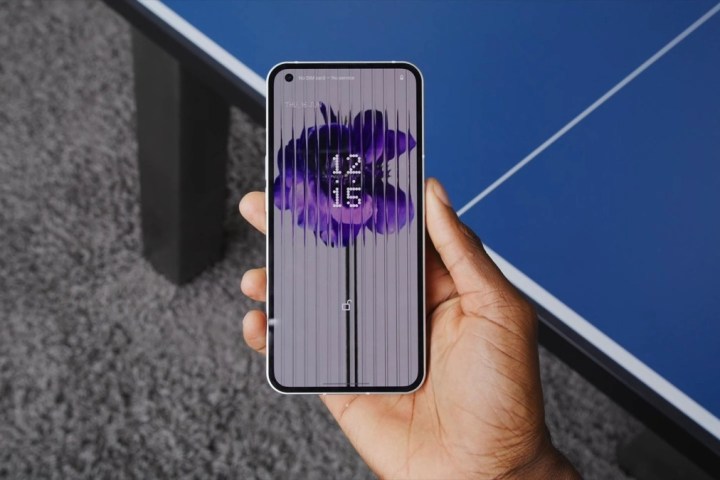Carl Pei, former founder of OnePlus and now the face of the Nothing brand, has been hyping up the company’s Nothing Phone 1 for what feels like ages. You’d think the smartphone world has seen it all, but Nothing has a brilliant plan to bring the fun back to phones. No, it’s not with foldables. It’s also not mini phones, nor is it the camera-centric madness that has gripped both Western and Eastern smartphone brands.
With the Nothing Phone 1, Pei wants to bring back beeps and bloops to your smartphone in an attempt to make your phone the most distracting thing in your life (more so than it is already), and it’s not exactly clear Nothing has something here.
Making your phone the center of attention

With the Nothing Phone 1, you’re able to customize the rear of the phone to light up with up to 900 LEDs for its so-called glyph interface. With these, you’ll be able to see who’s calling you, if your phone is charging your earbuds wirelessly, and other trivialities without looking at your phone’s display. Nothing also introduces a selection of ringtones and sounds to complement these LEDs.
So what’s my problem here? It’s not just that most people use cases and therefore won’t have a use for most of these features. It’s also that Nothing’s marquee features are inherently distracting — not just to you, but to everyone around you.
We’ve reached a point in smartphone etiquette where it is understood that everyone keeps their phones on silent half the time. Our smartphones come stuffed to the gills with focus and do not disturb modes that make it easier than ever to silence relentless notifications. Nothing flips this logic on its head in a nearly literal sense. Since you’re using your phone with the screen facing you, who gets the benefit of the rear LED lights? What’s the usefulness of something like “flip to silence” for a Nothing Phone 1 user?
No longer does turning your phone upside down signal a desire to interact with the physical world. It is instead an invitation to dive back into more, to play with your phone and disconnect even more. The phone invites you to use it, and use it, and use it. You get the feeling that the people behind the Nothing Phone 1 don’t understand why people use their phones. Is it a tool, or is it a toy?
The allure of novelty

There’s an argument to be had that smartphones are boring. We aren’t seeing circular phones anymore, nor are we getting wild form factors like the LG Wing. Instead, we’re seeing phones that take good pictures, ones with slightly faster processors, and boring old phones that do the same thing every year.
“You have a few big companies and the way they work is more structured and systematic,” Pei said in an interview with Engadget. “They have technology roadmaps from partners like Qualcomm, Sony, or Samsung Display, so they know what’s coming. They do a lot of consumer research, they get their feedback and they look at their competitors and the overall market landscape.”
That’s kind of good. Yes, the early pace of phones was breathtaking, with new and shiny things being added every year. Truth be told, those new and shiny things are still being added. Every year, your phone gets a little faster, chargers a little quicker, and screens get a little brighter. It’s slow and steady progress since we’re no longer fumbling around in the dark looking for what we want. We know what we want from phones, and we’ve gotten pretty good at refining that.
What remains after the shine dulls

Nothing’s big something is that it offers novelty in a world where smartphones are boring. But that’s only really true in the U.S. market. There are many perfectly delightful phones outside the U.S. You can get a Naruto phone, a phone with racing stripes, or one that you can write on with a pencil. And that’s not to mention the numerous folding phones available.
Novelty itself isn’t an entirely useful selling point. There has to be something more once the novelty wears off that keeps you engaged. I’ve been quite critical of foldables for their foibles, but they’ve been slowly picking up steam. And you can see why. Once the novelty of “oh, my phone can fold” wears off, foldable users still have the factor of “I can turn my phone into a tablet.” Even devices like the Galaxy Z Flip 3 have a functional use thanks to their ultra-compact size.
When the lure of using the best iPhone or Pixel camera wears off, you’re left with a pretty good phone, clean software, and good updates for everything else. The best part? All these “novelties” are still things you’d interact with and use daily. When the Nothing Phone 1’s allure wears off — that is, when you buy a case and enable do not disturb mode — you’re left with what appears to be a bog-standard midrange android phone. That’s not innovation. That’s confusing a tool for a toy.



